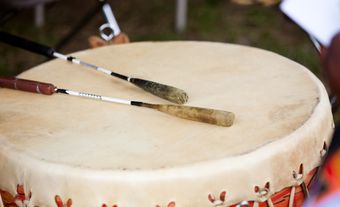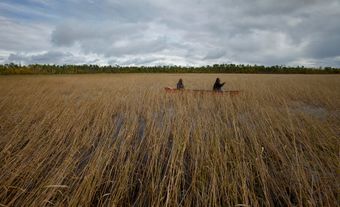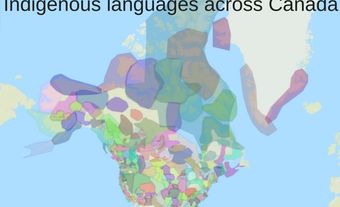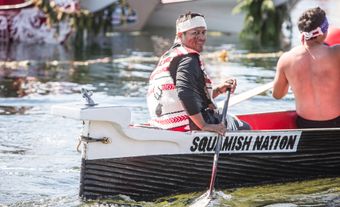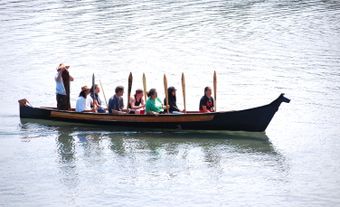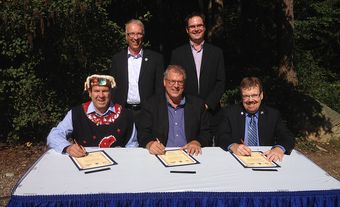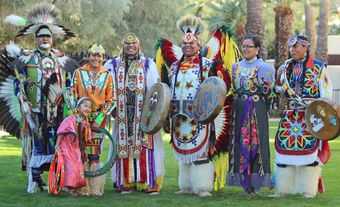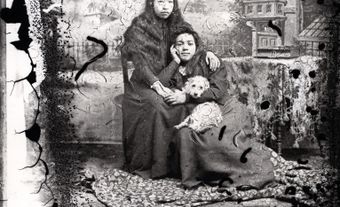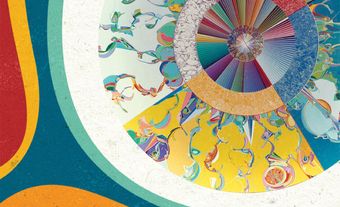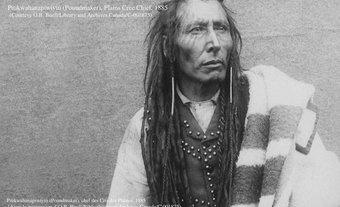The Interior Salish peoples include the Lillooet (or Lil’wat, see also Lillooet, British Columbia), Shuswap (now Secwepemc), Thompson (now Nlaka'pamux), Sinixt and Okanagan (Syilx) First Nations. These First Nations occupy territory in the interior of British Columbia(although some territory extends into the state of Washington in the United States). They speak languages belonging to the Interior Salish division of the Salishan language family. In the 2016 Census (Canada), 5,620 peoples identified themselves as Salish speakers, including 1,290 that speak Shuswap (Secwepemctsin). (See also Indigenous Languages in Canada).
Interior Salish Peoples
Lil’wat (Lillooet)
The Lil’wat or Lillooet are divided into two main groups linguistically, culturally and geographically: Upper or Fraser River Lillooet, mainly in the vicinity of the town of Lillooet on the Fraser River, and Lower or Mount Currie Lillooet, mainly around the community of Mount Currie in the Pemberton Valley and extending south to Skookumchuk, British Columbia. Use of the word "Lillooet" is confusing, as the term applies to the Mount Currie people only, who call themselves LEEL'-wat-OOL'(“the real, original Lillooet”).
The Fraser River Lillooet people refer to themselves as STLA'-tlei-mu-wh. They and the Mount Currie people speak slightly different dialects of the same language, known in English as "Lillooet." A third group of Lil’wat are the Lakes Lillooet who live in the vicinity of Seton and Anderson lakes, situated midway between Upper and Lower Lil’wat territory.
The Lil’wat belong to the Plateau culture area (see also Plateau Indigenous Peoples in Canada), one of six Indigenous culture areas in Canada. The Lower Lil’wat were also strongly influenced by adjacent Northwest Coast cultures (see also Northwest Coast Indigenous Peoples in Canada).
Secwepemc (Shuswap)
The term "Shuswap" is an Anglicization of the Indigenous word these people call themselves and transcribed today as Secwepemc. The Shuswap are the northernmost Interior Salish group of the Plateau culture area. Formerly their territory was vast, extending from the Rocky Mountains in the east to the Fraser River in the west, and ranging from Williams Lake in the north to Armstrong in the south. Shuswap villages are located near the numerous lakes in their territory and in the valleys of the North and South Thompson rivers and their tributaries, as well as along the Fraser River.
Ntlakapamux (Thompson)
The Thompson refer to themselves by the Indigenous term in-thla-CAP'-mu-wh (sometimes spelled "Ntlakapamux"). Historically, they were known as Thompson, after the name of the river that flows through their territory.
They are divided into two main groups: Lower Thompson, extending along the Fraser River canyon from just south of Lytton to an area just south of Spuzzum; and Upper Thompson, consisting of four subgroups in an area extending from Lytton and up the Fraser River to about 20 km below Lillooet, and including the Thompson River drainage system from its mouth upriver to Ashcroft, and the Nicola River drainage, including a large area around Merritt.
Originally, the Merritt and Nicola rivers area had been occupied by the Nicola-Similkameen Dene. However, by the late 1800s Ntlakapamux and Okanagan (Syilx) had taken over their territory.
Okanagan (Syilx)
The Interior Salish living in the Okanagan Valley and along the Similkameen River are known as Okanagan or Syilx, although they form part of a larger group now known as "Okanagan-Colville" by some linguists and anthropologists. Okanagan-Colville territory occupies 72 500 km2in south-central British Columbia (70 per cent) and northeast Washington state (30 per cent).
The Indigenous term n-seel-ick-CHEEN refers to all those people who speak the Okanagan-Colville language. In British Columbia, this language is known in English as "Okanagan," and in Washington state it is most often called "Colville." There are seven dialect divisions of the Okanagan-Colville language, of which three are (or were, in the case of "Lakes") in British Columbia.
"Northern Okanagan" refers to the dialect spoken by Indigenous peoples living in the Okanagan Lake region and along the Okanagan River drainage system. “Similkameen Okanagan” refers to the dialect spoken by Indigenous peoples living along the Similkameen River (territory formerly occupied by the Nicola-Similkameen Athapaskans).
The "Lakes" dialect was formerly spoken by those peoples living along the Upper and Lower Arrow lakes. However, by about 1870 they had moved south across the border and were later allotted land on the Colville Indian Reservation.
Sinixt
The Sinixt are located in the interior plateau of British Columbia. The Sinixt describe their territory as extending north of Revelstoke, British Columbia, to Kettle Falls, Washington, USA, in the south. West to east, their territory stretches from the Monashee Ridge to the Rocky Mountain Ridge.
The federal government declared the Sinixt extinct in 1956. This has prevented the Sinixt from accessing Indigenous land and rights. The Sinixt have launched a Supreme Court case to become federally recognized.
Interior Salish Culture
Historically, Interior Salish peoples survived on a combination of fishing, hunting, and gathering of plants. They led a basic subsistence lifestyle. The quest for food was regimented by an annual cycle that took groups of people to various places, based on the availability of resources.
During the winter months, Interior Salish lived in villages consisting of clustered semi-subterranean dwellings known as “pit houses.” Here, they existed on the food they had prepared and preserved at other times of the year. These pit houses were constructed in circular or squarish holes dug about 2 m deep and about 8 m in diameter. The rafters forming the conical roof of each pit house were thickly insulated with earth and grass to protect the people inside from the cold. Sometimes, rectangular or conical tule-mat lodges were used as winter homes by the Interior Salish. However, such dwellings were most often used during warmer months.
The basic political unit of Interior Salish society, the village, was governed communally. Within each village there were several leaders or chiefs known for their proficiency in such skills as fishing, hunting, war or oratory (speaking). However, all adult males had the same rights and responsibilities and took part in decision-making. Men and women had clearly defined roles: men hunted, fished and manufactured tools from bone, wood and stone; women prepared food, wove baskets and mats, tanned animal hides for clothes, and looked after small children.
As preparation for adulthood, each child underwent a "vision quest" by training alone in the mountains to receive a guardian spirit power. This spirit power guided and protected initiates throughout their lives and gave them special skills or supernatural strength or vision. Some guardian spirits were more powerful than others, bestowing upon the receiver the ability, for example, to heal the sick. Every year, through special songs and dances during winter ceremonials, the relationship with guardian spirits was renewed.
Contact with Europeans
The first contact that Interior Salish had with Europeans occurred in 1793 when Alexander Mackenzie made his overland journey to the Pacific and met groups of Secwepemc near the northernmost extremities of their territory. In 1808, when Simon Fraser descended the river later named after him, he encountered Secwepemc, Lil’wat and Ntlakapamux. The first encounter of Okanagan-speaking First Nations with Europeans in what is now British Columbia took place in 1811 in the Arrow Lakes area, when David Thompson, an explorer for the North West Company, was searching for new supplies of furs. (See also Fur Trade in Canada.)
A few large reserves established during British Columbia’s colonial period were reduced significantly after Confederation (1867). In the 1870s, Interior Salish lands were surveyed, reserves were established, and the land claims dispute began. Land claims disputes continue to the present time. Out of the struggle for recognition of Indigenous rights, there emerged several prominent Interior Salish leaders, notably Chief Michelle of the Ntlakapamux, Chief Chillihitza of the Syilx, Chief David of the Secwepemc and, most recently, Chief George Manuel, also a Secwepemc.

 Share on Facebook
Share on Facebook Share on X
Share on X Share by Email
Share by Email Share on Google Classroom
Share on Google Classroom

